Weekly Current Affairs (15th September 2025 to 21st September 2025) | Current Affairs & Hindu Analysis: Daily, Weekly & Monthly - UPSC PDF Download
GS1/History & Culture
Sirarakhong Hathei Chilli Festival
Why in News?
The 14th Sirarakhong Hathei Chilli Festival has been inaugurated in Manipur, highlighting its cultural significance and agricultural heritage.
Key Takeaways
- The festival is celebrated annually in Sirarakhong village, Ukhrul district, Manipur.
- It commenced in 2010 to promote the Hathei chilli and its farming traditions.
- The Hathei chilli received Geographical Indication (GI) status in 2021.
Additional Details
- Local Identity: The chilli is also known as Sirarakhong chilli, indigenous to the region.
- Cultivation: It is traditionally grown on slopes using the jhum system.
- Distinct Qualities: Recognized for its bright red color, unique flavor, and medium pungency.
- ASTA Value: It holds a high American Spice Trade Association color value, making it desirable for food coloring.
- Nutritional Benefits: Rich in antioxidants, Vitamin C, and calcium, it also has medicinal properties.
- Uses: Commonly utilized in cooking, pickles, flavoring, food coloring, and in various processing industries.
- Uniqueness: Its exceptional qualities arise from the specific soil and climate of Sirarakhong, making it irreplaceable elsewhere.
This festival not only celebrates the Hathei chilli but also promotes local culture through various activities, including flag hoisting, Tangkhul Naga cultural events, buyer-seller meets, marketing programs, exhibitions, and awareness drives regarding government schemes.
[UPSC 2018]
Consider the following pairs: Tradition - State
1. Chapchar Kut festival — Mizoram
2. Khongjom Parba ballad — Manipur
3. Thong-To dance — Sikkim
Which of the pairs given above is/are correct?
Options: (a) 1 only (b) 1 and 2* (c) 3 only (d) 2 and 3
GS2/Polity
Cutting Off Online Gaming with the Scissors of Prohibition
Why in News?
The Government of India has recently enacted the Promotion and Regulation of Online Gaming Bill, 2025, which bans online real money games while promoting e-sports and social gaming. This decision was made without prior debate or consultation, raising significant concerns about its implications for investment and the digital economy.
Key Takeaways
- The new Bill has raised alarms regarding job losses and revenue declines in the online gaming sector.
- Critics argue that the ban may deter foreign investment and stifle innovation in India's digital industries.
- The government's justification of the ban is based on concerns about addiction and financial ruin among players.
Additional Details
- Impact on Employment: The online gaming industry was projected to employ around 1.5 lakh people by 2025 in fields such as design, programming, and customer support, but the ban threatens massive job losses.
- Revenue Implications: Online gaming was expected to contribute approximately ₹17,000 crore in GST revenue, a loss the government must now contend with.
- Concerns Over Regulation: Critics suggest that a better approach would involve careful regulation rather than outright prohibition, which might address issues like addiction without destroying the industry.
- Responsible Gaming Measures: Prior to the ban, many online gaming companies had implemented measures like age-gating and self-exclusion to promote responsible gaming, which the ban disregards.
- Constitutional Issues: The ban raises questions about constitutional rights, particularly Article 19(1)(g), which guarantees the right to practice any profession or business.
In conclusion, the abrupt ban on online real money gaming poses risks to jobs, revenue, and the regulatory landscape, leaving uncertainty about whether it effectively protects citizens or exacerbates existing vulnerabilities in the gaming sector.
GS3/Environment
A Climate-Health Vision with Lessons From India
Why in News?
In July 2025, Brazil hosted the Global Conference on Climate and Health, where 90 nations drafted the Belém Health Action Plan, set to launch at COP30. This plan aims to establish a global agenda for climate and health. Notably, India was not officially represented, missing a significant opportunity to showcase its developmental approach and position itself as a model for implementing the Belém Plan.
Key Takeaways
- India’s welfare schemes provide valuable lessons for integrating climate and health goals.
- Successful programs highlight the importance of leadership and community engagement.
- Intersectoral governance faces challenges that need addressing for effective implementation.
Additional Details
- Nutrition and Climate-Resilient Food Systems: The PM POSHAN scheme reaches 11 crore children in 11 lakh schools, linking health, education, agriculture, and food procurement. This initiative promotes millets and traditional grains, addressing malnutrition while enhancing climate-resilient food systems.
- Sanitation, Livelihoods, and Clean Energy: The Swachh Bharat Abhiyan has improved sanitation and public health while promoting sustainability. Programs like MNREGA have restored degraded ecosystems, and PM Ujjwala Yojana (PMUY) has reduced household air pollution by promoting clean cooking fuels.
- Political Leadership: Strong backing from the Prime Minister has facilitated inter-ministerial cooperation and public support for initiatives like Swachh Bharat and PMUY.
- Community Engagement: Successful programs have invoked cultural symbols and grassroots participation, showing the need for climate action to resonate with societal values of health and prosperity.
- Institutional Strengthening: Utilizing existing frameworks, such as ASHA workers, SHGs, and local governance bodies, can enhance credibility and sustainability at the community level.
India faces a critical choice: to continue addressing climate change and health issues separately or to adopt a bold, intersectoral model treating them as interconnected challenges. Embracing an integrated climate-health model can leverage India's welfare experiences, leadership, and community action, ultimately leading to transformative solutions.
GS2/Polity
A Judicial Nudge Following Stuck Legislative Business
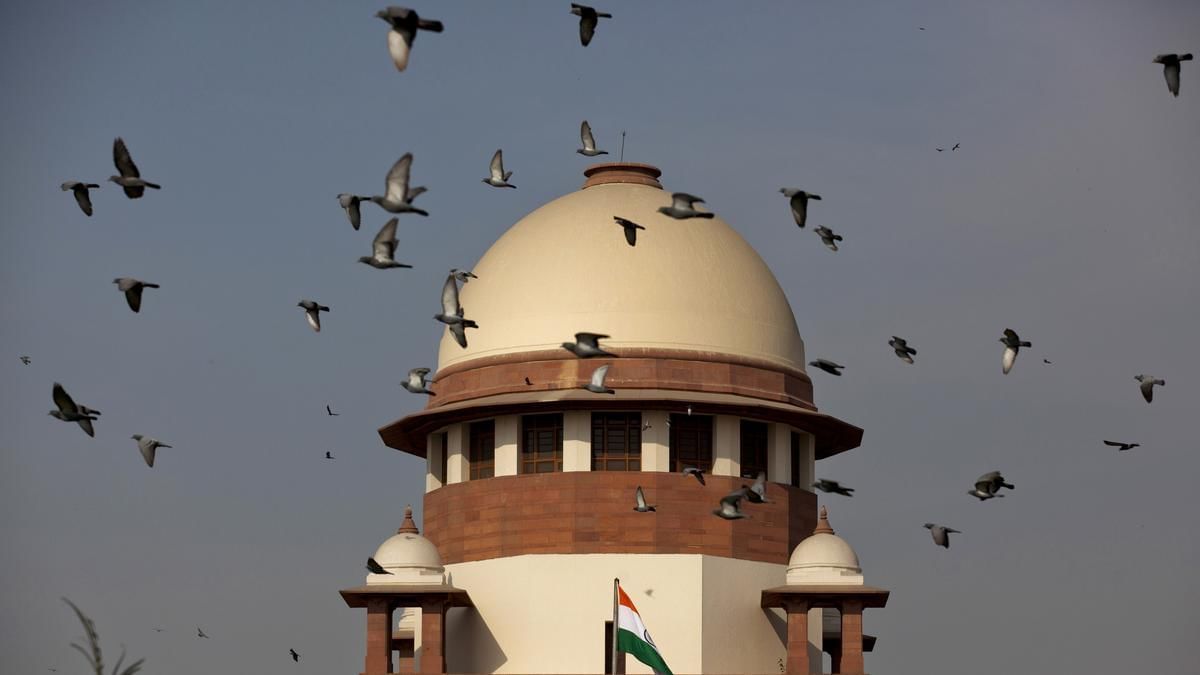 Why in News?
Why in News?
The role of the Governor in India’s constitutional framework has been a topic of extensive debate, especially concerning legislative assent under Article 200. Recent judicial verdicts, particularly the Supreme Court's decisions in State of Punjab vs Principal Secretary to the Governor (2023) and The State of Tamil Nadu vs The Governor of Tamil Nadu and Anr. (2025), have intensified this discussion by imposing a three-month time limit for Governors and the President to act on legislative Bills, aiming to resolve ongoing constitutional deadlocks.
Key Takeaways
- The Supreme Court has set a three-month deadline for Governors to act on Bills to prevent legislative paralysis.
- Article 200 provides the Governor with four options regarding state legislature Bills, but the Governor must act on the advice of the Council of Ministers.
- Judicial interventions have sparked concerns about the balance of powers and judicial overreach.
Additional Details
- Article 200: This provision allows the Governor to either assent to a Bill, withhold assent, return it for reconsideration (if not a money Bill), or reserve it for the President's consideration.
- Judicial Precedents: Historical cases like Shamsher Singh vs State of Punjab (1974) and Nabam Rebia (2016) have reinforced that Governors should act based on ministerial advice, limiting their discretion.
- Concerns have arisen regarding the indefinite delays by Governors in acting on critical Bills, effectively undermining the legislative process and the democratic will of the people.
- The Supreme Court's ruling highlights the judiciary's role in ensuring that federalism and representative democracy are upheld, despite criticisms of potential judicial law-making.
The ongoing debate surrounding Article 200 illustrates the tension between constitutional theory and political practice. The framers of the Constitution intended to limit the Governor's discretion, thereby ensuring the Governor remains subordinate to the elected government. The necessity for judicial intervention indicates a failure in political accountability, and the Supreme Court’s rulings serve to reinforce democratic principles and cooperative federalism within India's governance framework.
GS3/Economy
Almatti Dam and Upper Krishna Project Phase-III
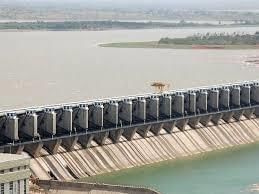 Why in News?
Why in News?
The Karnataka government has recently approved the Upper Krishna Project Phase-III, which aims to raise the height of the Almatti Dam. In response, the state of Maharashtra has expressed concerns and warned of potential legal action against this decision.
Key Takeaways
- Maharashtra's opposition is rooted in fears of submergence of villages and agricultural land due to rising water levels.
- Concerns regarding reduced water availability downstream, which could impact irrigation and drinking water projects in Maharashtra.
About Almatti Dam
- Overview: The Almatti Dam is a significant hydroelectric and irrigation project situated on the Krishna River in North Karnataka.
- Completion: The dam was completed in July 2005 as part of the Upper Krishna Irrigation Project (UKP).
- Dimensions: The dam stands at a height of 52.5 meters and stretches 3.5 kilometers in length.
- Power Generation: It has a power generation capacity of 290 MW, utilizing vertical Kaplan turbines with five units of 55 MW and one unit of 15 MW.
- Powerhouses: There are two separate powerhouses, Almatti I and II, that generate electricity before releasing water into the Narayanpur Reservoir.
- Functions: The dam provides irrigation, potable water, hydroelectric power, and plays a crucial role in flood management.
Back2Basics: Krishna River
- Origin: The Krishna River originates near Mahabaleshwar in Maharashtra's Western Ghats.
- Length: It stretches approximately 1,300 kilometers, making it the second-longest river in peninsular India after the Godavari.
- Course: The river flows through several states, including Maharashtra (303 km), Karnataka (480 km), Telangana, and Andhra Pradesh, before emptying into the Bay of Bengal.
- Major Tributaries:
- Right-bank: Ghatprabha, Malprabha, Tungabhadra.
- Left-bank: Bhima, Musi, Munneru.
- Hydropower & Irrigation Projects: Notable projects include Koyna, Tungabhadra, Srisailam, Nagarjuna Sagar, Almatti, Narayanpur, and Bhadra.
In summary, the ongoing developments regarding the Almatti Dam and the Upper Krishna Project Phase-III highlight significant regional concerns, particularly for Maharashtra, emphasizing the balance between infrastructure development and environmental and agricultural sustainability.
GS3/Economy
Onion Sector in India - Price Distress and Policy Challenges
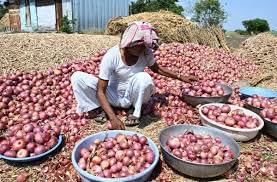 Why in News?
Why in News?
Maharashtra’s onion farmers are currently protesting due to a significant drop in onion prices, which have fallen below their production costs. The farmers are demanding compensation, stable export policies, and procurement support to alleviate their financial distress.
Key Takeaways
- India is the second-largest producer of onions globally, with Maharashtra being the leading state in production.
- Recent protests by farmers highlight the challenges of price volatility and inadequate storage infrastructure.
- Farmers are seeking government intervention, including compensation and stable export policies.
Additional Details
- Onion Production in India: India produces between 25 to 30 million tonnes of onions annually, primarily in states like Maharashtra, Madhya Pradesh, and Karnataka. The Rabi crop, which accounts for nearly 60% of total production, is favored for its storage potential.
- Challenges Faced:
- Price Volatility: Onions experience extreme price fluctuations due to factors such as overproduction and poor storage.
- Storage Losses: Many Rabi onions spoil due to inadequate storage facilities, leading to wastage.
- Export Policy Issues: Frequent changes in export policy damage India’s reputation in international markets, causing a loss of competitiveness to countries like China and Pakistan.
- High Production Costs: The cost of production ranges from Rs. 2,200 to Rs. 2,500 per quintal, while farmers receive only Rs. 800 to Rs. 1,000, resulting in significant financial losses.
- Farmers’ Protests: Beginning on September 12, 2025, farmers are demanding a compensation of Rs. 1,500 per quintal and an immediate halt to the sale of buffer stocks by the government to stabilize prices.
In conclusion, the ongoing crisis in the onion sector highlights critical weaknesses in India's agricultural pricing and export policies. While initiatives like the release of buffer stocks aim to stabilize consumer prices, they often adversely affect farmers. The current protests illustrate the pressing need for structural reforms, including reliable export strategies, improved procurement models, and enhanced infrastructure, to support India’s onion farmers effectively.
GS2/Polity
Registered Unrecognised Political Parties (RUPP)
Why in the News?
The Election Commission of India has de-listed 474 Registered Unrecognised Political Parties (RUPP) for failing to contest elections in the past six years. This action is part of a broader electoral clean-up initiative.
Key Takeaways
- The Election Commission's delisting aims to streamline the political landscape.
- RUPPs often fail to contest elections, which can create confusion among voters.
Additional Details
- Election Commission of India (ECI): Governed under Section 29A of the Representation of the People Act, 1951. The ECI lacks explicit powers to de-register parties post-registration, except under circumstances of fraud or anti-Constitutional allegiance.
- Judicial Interpretation: In the case of INC vs Institute of Social Welfare (2002), the Supreme Court ruled that while the ECI cannot de-register parties, it can delist them, which removes privileges but does not affect their legal status.
- Definition of RUPPs: These are political associations registered with the ECI but not recognized as national or state parties due to insufficient vote shares or seats in previous elections.
- Privileges of RUPPs:
- Tax exemptions under Section 13A of the Income Tax Act, 1961.
- Eligibility for common poll symbols during elections (as per the Symbols Order, 1968).
- Can nominate up to star campaigners.
- Obligations:
- Must contest elections periodically.
- Required to file annual audit accounts and contribution reports.
- Must disclose donations above ₹20,000.
- No cash donations exceeding ₹2,000 are permitted.
- Issues: Many RUPPs exploit their privileges without participating in elections, leading to a cluttered political field and voter confusion.
Recognised Political Parties
- Types: Recognised parties are categorized into National Parties and State Parties.
- Privileges: These parties enjoy exclusive reserved symbols, free access to electoral rolls, broadcasting time on national media, and consultation rights with the ECI.
- Recognition Criteria: Recognition is contingent upon vote share or seats secured in Lok Sabha or Assembly elections.
Conditions for Recognition
- National Party: Must secure 6% of valid votes in Lok Sabha/Assembly elections in four or more states and win four Lok Sabha seats in state Assembly elections or win two Assembly seats.
- State Party: Must win 2% of Lok Sabha seats (currently 11 seats) from at least three states in their respective Lok Sabha elections and win one Lok Sabha seat for every 25 seats allotted to that state.
In conclusion, the recent actions by the Election Commission reflect an effort to enhance the integrity of the electoral process by addressing the issue of inactive political parties. Recognized political parties play a critical role in the democratic landscape, providing essential privileges and responsibilities that contribute to a functioning political system.
GS1/History & Culture
Sarnath and UNESCO Nomination
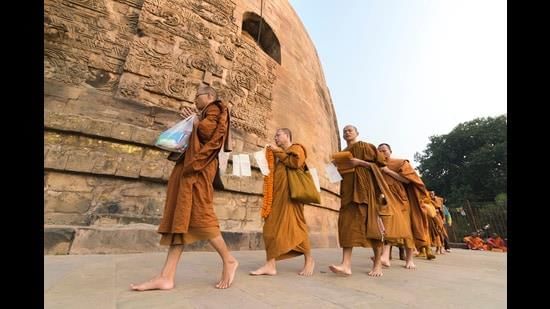 Why in News?
Why in News?
The Archaeological Survey of India (ASI) plans to install a revised plaque at Sarnath, acknowledging Babu Jagat Singh (1787–88) for revealing its archaeological significance, rather than attributing this discovery to British archaeologists.
Key Takeaways
- Sarnath is located near Varanasi, Uttar Pradesh, at the confluence of the Ganga and Varuna rivers.
- It holds religious significance as the site where Gautama Buddha delivered his first sermon in 528 BCE.
- Key monuments include the Dhamek Stupa, Ashoka Pillar, and Sarnath Archaeological Museum.
- Recent excavations reveal a long history of Buddhist activity at the site.
Additional Details
- Location: Sarnath is situated near Varanasi, Uttar Pradesh, where the Ganga and Varuna rivers converge.
- Religious Importance: This site is renowned as the place where Gautama Buddha delivered the Dhammachakkappavattana Sutta, marking the establishment of the Sangha.
- Key Monuments:
- Dhamek Stupa: Built around 500 CE, standing 39 m high with a diameter of 28 m.
- Ashoka Pillar: Features the Lion Capital, which is India’s national emblem.
- Chaukhandi Stupa: An octagonal tower added during the Mughal period.
- Mulagandha Kuti Vihar: Contains frescoes depicting the life of Buddha.
- Sarnath Archaeological Museum: Houses the original Lion Capital and various Buddhist sculptures.
- Archaeological Findings: Excavations over more than 200 years, notably by B. R. Mani (2013–14), indicate Buddhist presence predating Ashoka.
- Holy Site: Recognized as one of Buddhism’s Four Holy Places, alongside Lumbini, Bodh Gaya, and Kushinagar.
- Historic Role: By the 7th century CE, Sarnath was home to 30 monasteries and over 3,000 monks, thriving under Mauryan, Kushan, and Gupta patronage.
The ongoing plaque controversy highlights the need for historical accuracy, as the current plaque credits British archaeologists for the discovery of Sarnath, while Jagat Singh's descendants argue for his rightful acknowledgment as the first to uncover its remains. ASI has confirmed that a revised plaque will be installed soon to reflect this correction and address the biases present in many earlier plaques.
Additionally, Sarnath is officially proposed for inclusion in the World Heritage List for the 2025–26 cycle, after having spent 27 years on the tentative list. This move represents India's commitment to preserving its rich Buddhist heritage while promoting itself as the birthplace of Buddha.
[UPSC 2019]
In which of the following relief sculpture inscriptions is ‘Ranyo Ashoka’ (King Ashoka) mentioned along with the stone portrait of Ashoka?
- (a) Kanganahalli*
- (b) Sanchi I
- (c) Shahbazgarhi
- (d) Sohgaura
GS2/Governance
India Needs More Focus to Reach SDG 3, A Crucial Goal
Why in News?
In June 2025, India achieved its best-ever position in the Sustainable Development Goals (SDG) Index, ranking 99 out of 167 countries, a notable improvement from 109 in 2024. This progress reflects a consistent advancement since 2021, particularly in enhancing access to basic services and infrastructure. Despite this achievement, the SDG Report indicates ongoing challenges in health and nutrition, with significant disparities, especially among rural and tribal communities.
Key Takeaways
- India's ranking in the SDG Index improved to 99 in 2025.
- Challenges persist in health and nutrition, particularly affecting rural populations.
- SDG 3 focuses on health and well-being, but progress remains insufficient.
Additional Details
- Maternal Mortality Ratio: Currently at 97 deaths per 100,000 live births, which exceeds the target of 70.
- Under-five Mortality Rate: At 32 per 1,000 live births, surpassing the target of 25.
- Life Expectancy: Stands at 70 years, below the target of 73.63 years.
- Out-of-Pocket Health Expenditure: Accounts for 13% of household consumption, nearly double the target of 7.83%.
- Immunisation Coverage: Strong at 93.23%, yet still shy of the universal target of 100%.
Key barriers to progress include inadequate access to quality healthcare due to weak infrastructure, economic constraints, and non-economic factors such as poor nutrition and sanitation. Cultural practices and stigma further hinder community engagement with healthcare services.
Steps Required to Accelerate Progress on SDG Goal 3
- Universal Health Insurance: Essential for reducing financial burdens and enhancing equitable access, as evidenced by global experiences.
- Robust Primary Health Centres: Improved coordination across healthcare tiers is necessary for early disease detection and cost reduction.
- Leveraging Digital Health Tools: Utilizing telemedicine and integrated health records can help bridge access gaps, particularly in rural areas.
Health education in schools is crucial for prevention, which is more cost-effective than treatment. Educating children on nutrition, hygiene, and mental health can lead to improved long-term behaviors. This can significantly impact maternal health and child mortality rates. Global examples, such as Finland's and Japan's health education reforms, showcase the potential benefits of a structured curriculum in India.
Need for Collective Action to Achieve SDG Goals
- Policymakers should integrate health education into curricula and strengthen universal health coverage.
- Parents must advocate for comprehensive health education in schools.
While India's SDG ranking shows promise, only 17% of global targets are currently on track for 2030. Educating youth on healthy behaviors, combined with robust healthcare systems, can establish a foundation for sustained progress towards the vision of a healthier and stronger Viksit Bharat by 2047.
GS1/History & Culture
National Maritime Heritage Complex at Lothal
Why in News?
The Prime Minister has recently reviewed the construction progress of the National Maritime Heritage Complex (NMHC) located at Lothal in the Ahmedabad district of Gujarat.
Key Takeaways
- The NMHC aims to highlight India's rich maritime history spanning over 5,000 years.
- Lothal is recognized as the world's earliest dockyard dating back to the Indus Valley Civilization.
Additional Details
- Location: The complex is situated in Lothal, Ahmedabad district, Gujarat, specifically in the Bhal region near the Gulf of Khambhat.
- Developer: It is being developed by the Ministry of Ports, Shipping and Waterways, Government of India.
- Historical Significance of Lothal:
- Established around 2200 BCE as a prominent Harappan trade and craft center specializing in beads, gems, and ornaments.
- The name Lothal translates to "Mound of the Dead," akin to Mohenjo-daro.
- Excavated by S.R. Rao between 1955 and 1960, confirming its status as a major ancient port.
- The dockyard measured 222 x 37 meters and was linked to the old course of the Sabarmati river.
- Evidence of advanced water management systems, including lock gates and sluice systems, has been discovered.
- Trade connections once extended to Mesopotamia and other ancient civilizations.
- Nominated as a UNESCO World Heritage Site in 2014, making Lothal the only known port-town of the Indus Valley Civilization.
- Features of the Complex:
- Will include exhibition halls, a maritime park, an amphitheater, a museum, and educational research facilities.
- Focus on ancient trade routes, shipbuilding traditions, and navigation techniques.
- Expected to serve as a significant center for cultural tourism and heritage education.
The National Maritime Heritage Complex is anticipated to become a pivotal site for understanding and appreciating India's maritime history, fostering tourism, and promoting educational initiatives related to India's ancient maritime prowess.
GS2/Governance
Technology as the Grammar of Governance
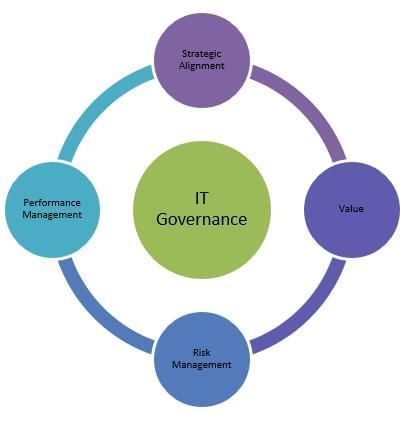 Why in News?
Why in News?
Over the last two decades, technology has become a crucial equalizer in India's governance landscape, with initiatives ranging from localized experiments in Gujarat to nationwide digital public infrastructure aimed at reaching the most marginalized sections of society.
Key Takeaways
- Gujarat's innovative governance models have served as templates for broader national initiatives.
- The integration of technology has significantly improved transparency, efficiency, and accessibility in government services.
- India's digital identity initiatives have brought millions into the formal economy and improved service delivery.
Additional Details
- Gujarat - The Laboratory of Innovation:
- Jyotigram Scheme (2003): Introduced feeder separation technology, providing 24/7 power to rural areas, which contributed to reduced groundwater depletion and revived rural industries, with an investment of ₹1,115 crore recovered in just 2.5 years.
- Solar Panels on Narmada Canal (2012): Generated 16 million units annually, powering 16,000 homes and reducing water evaporation.
- Governance Technology:
- e-Dhara: Digitized land records.
- SWAGAT: Facilitated direct CM-citizen video interactions.
- Online Tenders: Implemented to reduce corruption.
- National Canvas - From Gujarat to Delhi:
- India Stack and JAM Trinity:
- Jan Dhan Accounts: Included over 53 crore people in the banking system.
- Aadhaar: Provided digital identities to 142 crore citizens, facilitating easier access to government services.
- Direct Benefit Transfer (DBT): Eliminated middlemen, saving over ₹4.3 lakh crore.
- India Stack and JAM Trinity:
India's technological advancements in sectors like agriculture, healthcare, and infrastructure have showcased the potential of digital solutions to enhance governance and service delivery. The digital identity initiatives not only democratize access to services but also instill trust among citizens, thereby redefining the relationship between the government and the governed.
GS3/Economy
NPS to UPS: Govt Extends One-Time Option
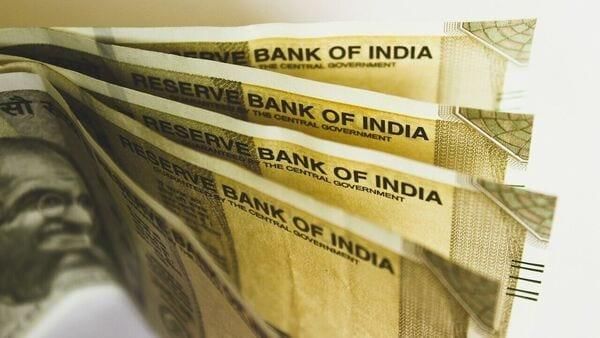 Why in News?
Why in News?
The central government has extended the deadline for employees to opt for the Unified Pension Scheme (UPS) under the National Pension System (NPS) until September 30, 2025. Despite approximately 23.94 lakh employees being eligible for this option, only around 40,000 have made the switch as of now. To manage the service matters for those choosing the UPS, the Department of Pension and Pensioners’ Welfare has issued the Central Civil Services (Implementation of the Unified Pension Scheme under the National Pension System) Rules, 2025, on September 2.
Key Takeaways
- The government has allowed central employees who joined between April 1 and August 31, 2025, under the NPS to migrate to the UPS.
- This one-time option aligns with the existing cut-off for other eligible categories and ensures flexibility in post-retirement financial planning.
Additional Details
- Switch Option from UPS to NPS: UPS subscribers have a one-time option to switch to NPS but cannot return to UPS. The switch must be made at least one year before retirement or three months before voluntary retirement (VRS). This option is not available in cases of dismissal or pending disciplinary actions.
- Difference from Old Pension Scheme: Before the UPS, employees hired before January 1, 2004, were under the Old Pension Scheme (OPS), which guaranteed fixed pensions. The UPS, introduced in April 2025, offers a guaranteed pension of 50% of the average basic pay of the last 12 months, provided the employee has served a minimum of 25 years.
- Financial Contributions: Under the NPS, employees contribute 10% of their basic pay while the employer contributes 14%. The UPS requires equal contributions from both employee and employer (10% each), plus an additional 8.5% from the government to fund the assured pension.
- UPS ensures a minimum monthly payout of ₹10,000 after 10 years of service, ensuring greater financial security compared to NPS, which does not guarantee a minimum payout.
Despite the government's efforts to promote the UPS and the extension of the deadline, the uptake remains low as many employees still prefer the OPS due to its lack of required contributions and guaranteed benefits. The Central Secretariat Service Forum has expressed concerns about both NPS and UPS, advocating for a complete return to the OPS.
GS2/Governance
Unlocking Innovation with India’s Procurement Reforms
Why in News?
The recent reforms to India's General Financial Rules (GFR) represent a significant shift in the approach to procurement, particularly in the realm of research and development (R&D). These reforms aim to transform procurement from a compliance-based function into a strategic driver of scientific advancement.
Key Takeaways
- Procurement can be a catalyst for innovation rather than merely a compliance mechanism.
- India's reforms ease restrictions on R&D procurement, allowing more flexibility for researchers.
- Global examples showcase successful procurement strategies that stimulate technological progress.
Additional Details
- Dual Nature of Procurement: The tension between cost efficiency and innovation is inherent in procurement processes. Rigid frameworks can hinder scientific progress, as seen in India's previous system requiring researchers to use the Government e-Marketplace (GeM) even when it failed to offer necessary specialized equipment.
- Recent Reforms: In June 2025, significant reforms were introduced, such as allowing institutional heads to bypass GeM for specialized equipment and increasing direct purchase thresholds. This acknowledges the need for tailored procurement solutions in research.
- Global Lessons: Other countries like Germany, the U.S., and South Korea have implemented innovative procurement strategies that promote technological advancement, demonstrating the potential benefits of mission-oriented procurement.
- Future Directions: To enhance procurement further, India could implement outcome-weighted tenders, provide sandbox exemptions for elite institutions, leverage AI in sourcing, and establish co-procurement alliances.
In conclusion, while India's GFR reforms mark an important step toward recognizing the critical role of procurement in research, they represent only the beginning of a necessary transformation. By adopting global best practices and innovative strategies, India can turn procurement into a powerful enabler of scientific discovery.
GS2/ International Relations
US Sanctions on Chabahar Port
Why in News?
The Trump administration has revoked the sanctions waiver for Chabahar Port, affecting India’s access to Afghanistan and Central Asia and undermining its strategic position in the region. The exemption, granted in 2018 under the Iran Freedom and Counter-Proliferation Act (IFCA), allowed India to advance its long-term plan to develop Chabahar Port as a gateway to Afghanistan and Central Asia.
What are the Implications of Revoking Chabahar Port’s Sanctions Waiver for India?
- Strategic Implications: The revocation of Chabahar’s waiver can undermine India’s regional leverage, limiting its ability to counterbalance Gwadar Port, integrate into the International North-South Transport Corridor (INSTC) connecting Russia and Europe, and maintain influence in Afghanistan and Central Asia.
- Economic and Trade Implications: India’s exports to Iran and Afghanistan—including textiles, engineering goods, pharmaceuticals, and food products—face disruption, while investments of USD 120 million and commitments of USD 250 million are at risk. The revocation coincides with India-US trade talks and 50% duties on labor-intensive goods, pressuring India’s export strategy.
- Operational and Legal Risks: Companies like Indian Ports Global Limited (IPGL) face exposure to US sanctions under the IFCA potentially causing delays or suspension of Chabahar trade and expansion projects.
- Geopolitical Implications: The revocation puts pressure on India-US relations and marks a major setback for India’s plan to use Chabahar Port as a vital gateway for trade and humanitarian aid, especially to Afghanistan.
Chabahar Port
About: It is a deep-water port in Sistan-Baluchistan, Iran, on the Makran coast near the Gulf of Oman, outside the Strait of Hormuz. It is Iran’s only deep-sea port with direct open-ocean access, providing India secure and direct access for large cargo ships. It has two main terminals—Shahid Beheshti and Shahid Kalantari—with India actively involved in developing the Shahid Beheshti Terminal.
Development & Management: The Chabahar Agreement (2016) was signed between India, Iran, and Afghanistan to establish the International Transport and Transit Corridor. IPGL, through its subsidiary India Ports Global Chabahar Free Zone (IPGCFZ), took over Chabahar Port operations in December 2018.
Operational Performance: To date, Chabahar Port has trans-shipped 2.5 million tonnes of wheat and 2,000 tonnes of pulses from India to Afghanistan, facilitated 40,000 litres of Malathion (environment-friendly pesticide) to Iran in 2021 for locust control, and supported humanitarian aid, including during the Covid-19 pandemic.
What is the Significance of Chabahar Port for India?
- Alternative Trade Route: It provides India an alternative route to Afghanistan and Central Asia, bypassing Pakistan, and improves access to Iran and the INSTC via shorter routes from Kandla Port.
- Ensuring Connectivity: The ongoing conflicts and tensions in the West Asian region, such as the Yemen crisis and the recent escalation between Iran and Pakistan, have disrupted vital maritime trade routes. Chabahar provides India with an alternative route for its commercial interests, reducing dependence on traditional chokepoints like the Strait of Hormuz.
- Economic Benefits: It strengthens India’s trade with Central Asia and Afghanistan, diversifies routes, and enhances access to Russia, Europe, Iran, and Afghanistan. Chabahar Port, a key INSTC node, links the Indian Ocean to Northern Europe, cutting trade costs by 30% and transit time by 40%, while giving landlocked nations access to the Indian Ocean and Indian markets.
- Humanitarian Assistance: Serves as a crucial entry point for humanitarian aid and reconstruction in Afghanistan.
- Strategic Influence: It strengthens India’s strategic presence in the Indian Ocean, counters China’s Gwadar Port and Belt and Road Initiative (BRI), and enhances anti-piracy capabilities.
Conclusion
Chabahar Port remains central to India’s regional influence, trade prospects, and connectivity ambitions. Its role as a strategic counterweight offers enduring opportunities, despite challenges from US sanctions, regional instability, and competing projects.
GS1/History and Culture
India Adds 7 Natural Sites to UNESCO Tentative List
Why in News?
India has included seven natural sites in UNESCO’s Tentative List of World Heritage Sites, bringing its total to 69. This reflects India’s dedication to preserving its rich natural and cultural heritage.
What is UNESCO’s Tentative List of World Heritage Sites?
The Tentative List is the initial step towards securing a UNESCO World Heritage nomination. Countries identify sites of exceptional universal value and submit them to UNESCO for consideration. Only sites on this list can be nominated for full inscription. In India, the Archaeological Survey of India (ASI) is responsible for compiling and submitting these nominations.
India’s Newly Added Sites
- Deccan Traps at Panchgani and Mahabaleshwar, Maharashtra. These sites are known for their well-preserved lava flows and are part of the Deccan Traps, located within the Koyna Wildlife Sanctuary, which is already a UNESCO World Heritage Site.
- Geological Heritage of St. Mary’s Island Cluster, Karnataka. This island cluster is famous for its unique columnar basaltic rock formations dating back to the Late Cretaceous period, around 101 to 66 million years ago.
- Meghalayan Age Caves, Meghalaya. The cave systems in Meghalaya, especially the Mawmluh Cave, are significant as they serve as the global reference point for the Meghalayan Age in the Holocene Epoch, reflecting important climate and geological changes over the last 11,000 years.
- Naga Hill Ophiolite, Nagaland. This site offers a rare glimpse of ophiolite rocks, representing oceanic crust uplifted onto continental plates, providing valuable insights into tectonic processes and mid-ocean ridge dynamics.
- Erra Matti Dibbalu (Red Sand Hills), Andhra Pradesh. These red sand formations near Visakhapatnam exhibit unique paleo-climatic and coastal geomorphological features, revealing insights into Earth’s climatic history and evolution. Erra Matti Dibbalu was designated a GeoHeritage Monument by the Geological Survey of India in 2016.
- Natural Heritage of Tirumala Hills, Andhra Pradesh. This site features the Eparchaean Unconformity and the Silathoranam (Natural Arch), holding significant geological importance and representing over 1.5 billion years of Earth’s history. The site is part of the Seshachalam Biosphere Reserve and Venkateswara National Park.
- Varkala Cliffs, Kerala. The cliffs along Kerala’s coastline expose the Warkalli Formation of Mio-Pliocene age, along with natural springs and distinctive erosional landforms, offering both scientific and touristic value.
World Heritage Sites
World Heritage Sites (WHS) are locations of exceptional universal value, recognized for their importance and protected for future generations. These sites can be cultural, natural, or mixed, and are safeguarded under the 1972 World Heritage Convention, which was adopted by UNESCO member countries. The UNESCO World Heritage Committee oversees the maintenance of this list through the World Heritage Programme. India ratified the Convention in 1977.
As of September 2025, India boasts 44 World Heritage Sites recognized by UNESCO, with the Maratha Military Landscapes of India being the latest addition as the 44th site.
GS2/International Relations
India on the U.S. Blacklist on Fentanyl
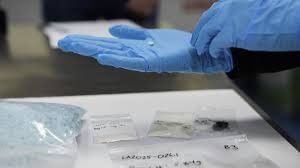
Why in News?
In a recent report known as the Major’s List sent to the U.S. Congress, President Donald Trump has identified India, along with 22 other countries such as Pakistan, China, and Afghanistan, as significant sources or transit hubs for illicit drugs, particularly fentanyl. This classification poses a serious threat to the United States and its citizens.
Key Takeaways
- The Major’s List outlines nations involved in narcotics or precursor chemical flows.
- Fentanyl is a synthetic opioid that has become the leading cause of overdose deaths in the U.S.
- Regulating fentanyl is challenging due to its synthetic nature and the availability of precursor chemicals.
Additional Details
- Fentanyl: A potent synthetic opioid developed in the 1960s for managing severe pain, it is now responsible for a significant number of overdose deaths in the U.S., being nearly 50 times stronger than heroin. Just 2 mg can be fatal.
- Between August 2023 and August 2024, over 57,000 Americans died from opioid overdoses, primarily related to fentanyl.
- Supply Chain Complexity: The fentanyl trade involves a network where countries like China and India produce precursor chemicals, which are then processed into fentanyl by Mexican cartels and smuggled into the U.S.
- The U.S. response includes increased seizures by the DEA and public health measures such as expanded naloxone distribution and treatment programs for opioid addiction.
The inclusion of India in the Major’s List signals the need for increased scrutiny and cooperation in addressing the challenges posed by fentanyl trafficking and its implications for public health and international relations.
GS3/Economy
Govt to Push Geothermal Pilots Under New Policy
Why in News?
The Ministry of New & Renewable Energy (MNRE) has introduced its inaugural National Policy on Geothermal Energy, aimed at establishing a framework for the development and regulation of geothermal resources in India.
Key Takeaways
- The policy was officially announced in September 2025.
- It supports India's goal of achieving Net Zero emissions by 2070.
- The scope includes both power generation and direct-use applications.
- MNRE will lead implementation, collaborating with various stakeholders.
- Financial support includes tax incentives and grants.
Additional Details
- Financial & Regulatory Support: The policy offers tax incentives, grants, and concessional financing, alongside long-term leases of up to 30 years. Additionally, Viability Gap Funding (VGF) is provided to cover high initial costs estimated at ₹36 crore per MW.
- The emphasis is on repurposing abandoned oil and gas wells for geothermal energy, with collaborations already in place with ONGC and Vedanta Ltd.
- Global partnerships have been established with countries like Iceland, Norway, the US, and Indonesia for research and development in Enhanced and Advanced Geothermal Systems.
- Currently, five pilot projects have been sanctioned for resource assessment and demonstration in various regions.
India's geothermal energy potential is estimated at 10.6 GW as identified by the Geological Survey of India (GSI), with over 381 hot springs mapped across the country. Although there are no grid-connected geothermal plants yet, ongoing projects include a 20 kW pilot binary-cycle plant in Manuguru, Telangana, and other pilot projects in Ladakh, Gujarat, and Rajasthan. The future roadmap targets a geothermal capacity of 10 GW by 2030 and approximately 100 GW by 2045.
Major Geothermal Sites in India
| Region/State | Site/Province | Key Features & Notes |
|---|---|---|
| Ladakh (Himalayan Province) | Puga Valley | High-temperature hot springs; identified as promising for pilot projects. |
| Himachal Pradesh | Manikaran | Popular hot spring zone; suitable for geothermal plants and tourism. |
| Uttarakhand | Tapoban & Alaknanda Valley | Himalayan geothermal systems; identified for research. |
| Chhattisgarh | Tattapani Field | Well-studied site; suitable for direct heat use. |
| Andaman & Nicobar Islands | Volcanic geothermal fields | High geothermal potential; could significantly reduce power costs. |
Consider the following:
- 1. Electromagnetic radiation
- 2. Geothermal energy
- 3. Gravitational force
- 4. Plate movements
- 5. Rotation of the earth
- 6. Revolution of the earth
Which of the above are responsible for bringing dynamic changes on the surface of the earth?
(a) 1, 2, 3 and 4 only (b) 1, 3, 5 and 6 only (c) 2, 4, 5 and 6 only (d) 1, 2, 3, 4, 5 and 6 *
GS2/Governance
Supreme Court Guidelines on DNA Evidence in Criminal Cases
 Why in News?
Why in News?
The Supreme Court has issued critical guidelines in the case of Kattavellai @ Devakar v. State of Tamil Nadu to standardize the handling of DNA evidence in criminal cases. This initiative aims to prevent contamination and delays that can arise after evidence is compromised in significant cases.
Key Takeaways
- The case involved serious charges including rape, murder, and robbery.
- The court highlighted issues such as delays in submissions to the Forensic Science Laboratory (FSL), inadequate chain of custody, and the risk of evidence contamination.
- There is a pressing need for uniform procedures across states, as current guidelines are scattered and inconsistent.
- The Supreme Court has stepped in to ensure national uniformity in the handling of DNA evidence.
Additional Details
- Collection and Documentation: DNA samples must be properly packaged, labeled with FIR details, and signed by the medical officer, Investigating Officer (IO), and witnesses.
- Transportation: The Investigating Officer is required to deliver the samples to the FSL within 48 hours, recording any reasons for delays.
- Storage Pending Trial: Evidence packages cannot be opened or resealed without the approval of the trial court.
- Chain of Custody Register: This must be maintained until a conviction or acquittal, with the IO responsible for addressing any lapses.
Previous SC Observations on DNA Evidence
- Anil v. Maharashtra (2014): DNA evidence is considered reliable only when laboratory procedures are rigorously followed.
- Manoj v. Madhya Pradesh (2022): DNA evidence was rejected due to contamination risks as the recovery was from an open area.
- Rahul v. Delhi (2022): DNA evidence was deemed inadmissible after being held in police custody for two months.
- Pattu Rajan v. Tamil Nadu (2019): The value of DNA evidence is contingent upon corroborating evidence; its absence is not necessarily fatal to a case.
- Sharda v. Dharmpal (2003): Orders for DNA testing are valid and do not violate Article 21 of the Constitution.
- Das @ Anu v. Kerala (2022): DNA collection is not considered self-incrimination under Article 20(3); Section 53A of the CrPC allows for collection in rape cases.
Back2Basics: DNA Profiling
- Overview: DNA profiling, also known as DNA fingerprinting, is a forensic method used to identify individuals by analyzing unique DNA regions, primarily Short Tandem Repeats (STRs).
- How it Works: Human DNA is 99.9% identical; the 0.1% variability is what enables personal identification.
- Sources: DNA can be extracted from various biological materials including blood, semen, saliva, hair, bone, skin, or even "touch DNA."
- Processes: The DNA profiling process involves isolation, purification, amplification, visualization, and statistical comparison of DNA markers.
- Methods: Techniques such as miniSTRs and mitochondrial DNA (mtDNA) are useful for analyzing degraded or limited samples.
- Legal Status: DNA evidence is regarded as expert opinion under Section 45 of the Indian Evidence Act (now BSA 2023 Section 39), serving as corroborative rather than substantive evidence.
In summary, the Supreme Court's guidelines aim to enhance the integrity and reliability of DNA evidence in criminal proceedings, addressing existing gaps and ensuring uniformity in procedures across the country.
GS3/Environment
How Serious is the Global Plastic Pollution Crisis?
Why in News?
The global crisis of plastic pollution has escalated into a significant environmental and socio-economic challenge. Once celebrated for its convenience, plastic's non-biodegradable nature and increasing consumption rates have led to severe ecological repercussions. This year’s World Environment Day theme, Ending Plastic Pollution, underscores the urgent need for action against this crisis, which intersects with various sectors including health, governance, and environmental sustainability.
Key Takeaways
- Plastic production reached 500 million tonnes in 2024, generating 400 million tonnes of waste.
- Current trends predict plastic waste could triple to 1.2 billion tonnes by 2060.
- Experts warn that by mid-century, there could be more plastic in the ocean than fish.
Additional Details
- Rising Consumption: Between 2000 and 2019, plastic production doubled, reaching 460 million tonnes.
- Waste Surge: In 2019, global plastic waste amounted to 353 million tonnes, with packaging accounting for 40%.
- Recycling Failure: Only 9% of plastic waste is recycled, while 50% ends up in landfills and 22% escapes into the environment.
- Oceanic Threat: Approximately 11 million tonnes of plastic enter oceans every year, adding to the existing 200 million tonnes already present.
- Climate Connection: Plastics contribute to 3.4% of global greenhouse gas emissions and could consume 19% of the global carbon budget by 2040.
The challenge of plastic pollution is compounded by its non-biodegradable nature, which allows plastics to fragment into micro- and nano-particles, contaminating ecosystems from the highest peaks to the deepest ocean trenches. Health risks associated with microplastics threaten food chains and water safety, while poorer nations bear the economic burden of inadequate waste management systems.
Global Remedies Proposed
- Legally Binding Agreement: At UNEA-5 in 2022, all 193 UN member states committed to negotiating an international treaty aimed at ending plastic pollution.
- UNEP Target: Aiming to reduce plastic waste by 80% within two decades via innovation and recycling.
- Reduction of Single-Use Plastics: An urgent call to phase out unnecessary petrochemical products.
- Extended Producer Responsibility (EPR): Manufacturers to be held accountable through various financial incentives.
- Recycling Revolution: Currently, only 6% of plastics come from recycled sources, necessitating technological advancements and market incentives to increase this percentage.
Role of Individuals and Media
- Greener Alternatives: Encouraging the use of traditional, reusable products and eco-friendly materials.
- Awareness Campaigns: The media plays a critical role in shaping consumer habits and influencing governmental policies.
- Behavioural Change: A collective reduction in plastic consumption is vital alongside systemic reforms.
In conclusion, plastic pollution highlights the contradictions of modern development, where convenience has led to a crisis. The data indicates that humanity is at a crossroads: continuing unsustainable practices or transitioning toward circular, sustainable economies. For countries like India, which face unique developmental challenges, addressing plastic pollution is essential for environmental governance, climate action, and public health.
UPSC Relevance
In the context of UPSC 2023, understanding oil pollution and its impacts on marine ecosystems is pertinent. Both plastic and oil pollution stem from petrochemical sources and threaten biodiversity, fisheries, and coastal livelihoods. For India, the ramifications are particularly severe due to its extensive coastline and reliance on marine resources, leading to risks of livelihood loss and ecological imbalance.
GS3/Economy
GST 2.0 — Short-Term Pain, Possible Long-Term Gain
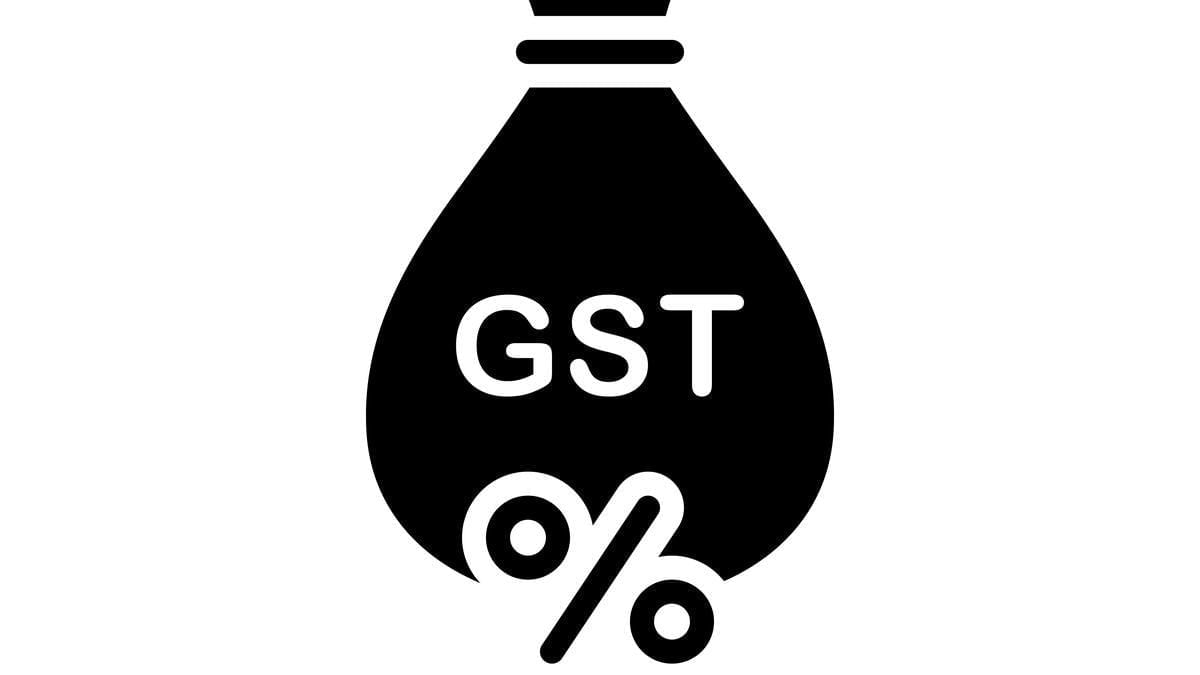 Why in News?
Why in News?
The Goods and Services Tax (GST), aimed at establishing a destination-based tax system, was designed to enhance efficiency in taxation by ensuring that taxes are ultimately borne by final consumers, with input taxes being rebated. However, the initial implementation faced challenges including multiple tax rates, inverted duty structures, and significant compliance costs. The new GST rate structure, set to take effect on September 22, 2025, represents a substantial revision with wide-ranging implications for consumption, production, government revenue, and overall macroeconomic stability.
Key Takeaways
- The 2025 reform simplifies the GST rate structure by consolidating most goods and services into three main tax rates: 0%, 5%, and 18%, with a 40% demerit rate for luxury and sin goods.
- About 80% of the 546 goods reviewed will see tax rate reductions, benefiting sectors such as textiles, automobiles, and healthcare.
- Despite potential consumer benefits, the reforms may lead to significant revenue losses for the government and fiscal instability.
Additional Details
- Revenue Implications: GST revenue (R) is calculated as the product of the tax rate (r) and the tax base (E). While lower tax rates can stimulate demand, they may not proportionally increase overall revenue, leading to potential revenue declines.
- Shortfall Projections: The Ministry of Finance estimates an annual revenue loss of ₹48,000 crore, which could significantly impact fiscal stability.
- Income Effects: The reform may initially boost disposable incomes for consumers of essential goods, but lower GST rates could lead to shifts in consumption towards higher-rated goods, potentially benefitting the government in the long run.
- Cascading Issues: The revised GST structure fails to eliminate all cascading effects, as exempt goods do not allow for input tax credits (ITC), complicating the claiming process for businesses.
- Macroeconomic Challenges: With nominal GDP growth falling short of projections, achieving GST revenue targets may become increasingly difficult, pressuring both central and state budgets.
In conclusion, the 2025 GST reforms are a significant effort to streamline the tax system and boost economic activity. They promise lower prices and increased disposable incomes, particularly in labor-intensive sectors. However, the associated fiscal costs and unresolved inefficiencies pose challenges that could undermine the long-term effectiveness of these reforms. Sustainable growth will ultimately require a focus on improving investment capacity and productivity.
GS1/History & Culture
ASI to Revise Sarnath Plaque, Credits Benares Ruler’s Family
Why in News?
The Archaeological Survey of India (ASI) is set to update the Sarnath plaque to acknowledge the contributions of the Benares ruler’s family in preserving the heritage site, rather than attributing this credit solely to British officials, ahead of a visit from a UNESCO team.
Key Takeaways
- Sarnath is a significant Buddhist site located near Varanasi, Uttar Pradesh.
- The updated plaque will recognize Jagat Singh's contributions to the heritage site from the late 18th century.
- This revision reflects a broader movement to decolonize historical narratives in India.
Additional Details
- Sarnath: Located about 10 km from Varanasi, Sarnath is revered as the site where Gautama Buddha delivered his first sermon after attaining enlightenment, marking the beginning of the Buddhist community.
- Buddha’s First Sermon: Around 528 BCE, Buddha shared the Four Noble Truths and the Eightfold Path here, establishing core Buddhist philosophy.
- Mauryan Patronage: Emperor Ashoka visited Sarnath in the 3rd century BCE, commissioning stupas and pillars, including the famous Ashokan Lion Capital, which is now India's national emblem.
- Historical Attribution: Recent scholarship suggests that Jagat Singh's excavations in 1787-88 were pivotal in uncovering Sarnath's relics, challenging previous narratives that credited British officials.
- Significance of the Revision: The upcoming plaque change is part of a larger effort to recognize local contributions to heritage preservation and align with India's cultural diplomacy efforts.
This revision not only aims to correct historical records but also emphasizes the importance of recognizing indigenous contributions to heritage sites, particularly as Sarnath is a strong candidate for inclusion in UNESCO's World Heritage List.
|
63 videos|5397 docs|1142 tests
|
















